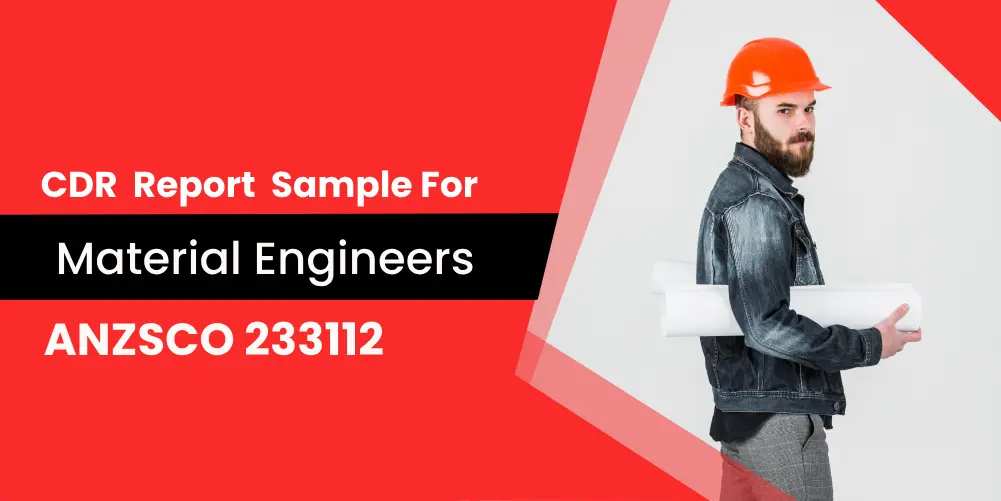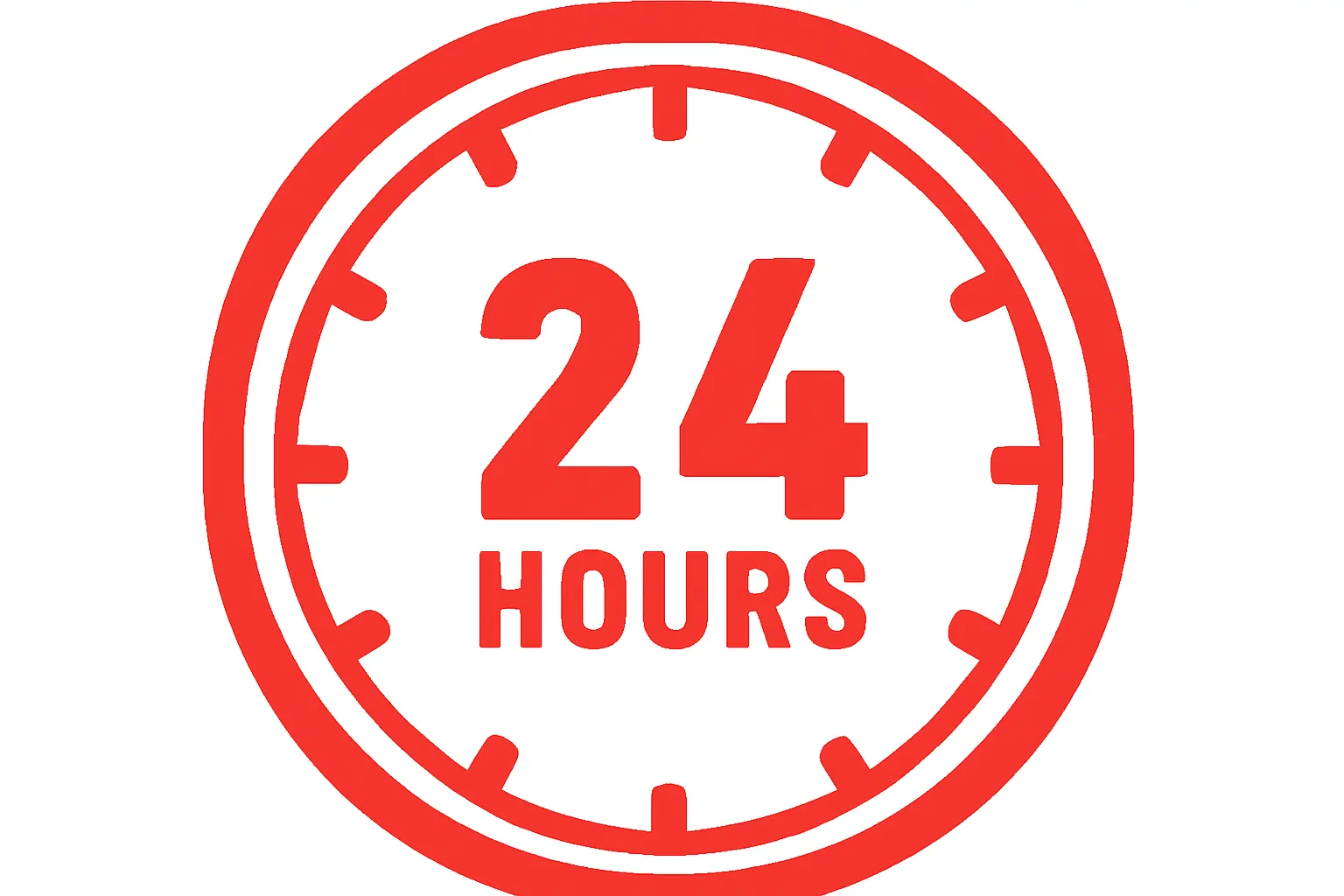Get Expert CDR, RPL, Stage 1, and Stage 2 Competency Samples for Reference
Contact to require a detailed analysis and assessment of your plan.
CDR Sample for Material Engineers

Materials Engineers with a Bachelor’s Degree or higher can assess their engineering qualification. Materials Engineers are the engineers who develop materials such as metals and semi-conductors with striking combinations of chemical, mechanical and electrical properties that make the other advances conceivable. It is one of the most basic and essential engineering subjects. Materials Engineers are in very high demand by several reputed technical organizations in Australia. They require Materials Engineers with high skills and qualification from Australia as well as other nations over the world.
CDR sample for Material Engineers includes all the required reports such Curriculum Vitae (CV), Continuing Professional Development (CPD), three Career Episodes (CE), Summary Statement.The content of the CDR Report Samples is given below:
Curriculum Vitae (CV):
Resume on the basis of a professional template.
Continuing Professional Development (CPD):
The sample of CPD clarifies the Engineering Knowledge of the applicant – 350 words.
Materials Engineer Career Episode Sample 1:
“INVESTMENT CASTING OF FUTO LOGO USING BRASS” – 1986 words
Materials Engineer Career Episode Sample 2:
“THE INFLUENCE OF TITANIUM AND ALUMINIUM ADDITION ON THE MICROSTRUCTURE, MECHANICAL AND PHYSICAL PROPERTIES OF LEADED BRASS”– 2588 words
Materials Engineer Career Episode Sample 3:
INFLUENCE OF HEATING AND COOLING IN 7000 ALUMINIUM ALLOY SERIES USING JOMINY END QUENCH TESTS” – 2230 words
Materials Engineer Summary Statement Sample:
Detail explanation of all the competency element – 2246 words.
Material Engineering Career Episode 1
Project Name: INVESTMENT CASTING OF FUTO LOGO USING BRASS
Project Type: Academic Based Career Episode Project
Engineering Activities of Material Engineer:
- To understand the investment casting manufacturing technique and also to know the systematic process to be implemented to manufacture the product.
- To calculate the dimension and size of the university logo and implement the calculated dimension to model the 2D design of the university logo in SolidWorks.
- To develop the aluminium die with a size similar to that of the university logo and execute the experimental analysis to determine the shrinkage of the brass and wax.
- To create the wax pattern with the printed university logo on it by heating the wax inside the mould at the temperature of about 50 0c for 8-10 minutes.
- To execute the “chasing” process on the wax pattern to remove the parting line and start the investment of the wax until the desired thickness was obtained.
- To manufacture the required product having better surface quality and strength with the university logo imprinted on it by heating the mould at about 1000 0
- To record all the results and data obtained from the manufacturing process and report them to the supervisor to know if the manufacturing process was going as per requirement or not.
- To have good coordination with the lab operators and supervisor during the time of the project.
Problems & Solutions
Problem 1 Career Episode 1 and its solution
University logo was not clearly visible on the wax pattern
The author created the wax pattern with the university logo on it and increased the temperature to 50 0c and heated it for 8-10 minutes. After the estimated time, the author removed the heat and let it be cooled. Once the mould was cooled, the author removed the pattern from the die and found that the university logo was clearly visible on the wax pattern, which was the required pattern for manufacturing the product.
Problem 2 Career Episode 1 and its solution
Defect like blowhole occurred on the surface of the product
Material Engineering Career Episode 2
Project Name: THE INFLUENCE OF TITANIUM AND ALUMINIUM ADDITION ON THE MICROSTRUCTURE, MECHANICAL AND PHYSICAL PROPERTIES OF LEADED BRASS
Project Type: Academic Based Career Episode Project
Engineering Activities of Material Engineer:
- To understand the several methods of the casting, and effect of the addition of the element like chromium and nickel into the brass.
- To select equipment and materials for the casting of the brass specimen.
- To prepare the test specimen by casting process with various components of the aluminium and tin.
- To carry out the microstructural test in the alloy specimen.
- To perform tensile, hardness, compressive, thermal and electrical conductivity test in the alloy specimen.
- To tabulate and make the graph of the several testing performed on the alloy specimen.
Problems & Solutions
Problem 1 Career Episode 2 and its solution
During the compressive test, the value of the maximum compressive strength was found very less. The author investigated the universal testing machine and the author noticed that the clamping jaw was not holding the sample symmetrically. The author checked the surface of the jaw and found the surface of the jaw was irregular, due to which the workpiece was sliding over the jaw. The author contacted with the machine lab technician, and he exchanged the jaw of the universal testing machine with the new one. Further, the author carried the compression testing in the universal testing machine, and the author found the compressive strength of the specimen similar to our expected value.
Problem 2 Career Episode 2 and its solution
Material Engineering Career Episode 3
Project Name: INFLUENCE OF HEATING AND COOLING IN 7000 ALUMINIUM ALLOY SERIES USING JOMINY END QUENCH TESTS
Project Type: Academic Based Career Episode Project
Engineering Activities of Material Engineer:
- To implement a literature survey to accumulate the related data and information about the heat treatment process for aluminium alloy using the process of Jominy end quench tests.
- To develop a well-managed methodology chart about the process to be carried out in the entire process with the intentions of framing a picture of the project.
- To choose the required materials and equipment such as best suited aluminium alloys, Jominy test apparatus equipment, etc. and analyze the composition of material using JMatPro property modelling software.
- To prepare the experimental setup using all the collected equipment as a preparation for Jominy quench test of the 7000 series aluminium
- To carry out all the experimental procedures i.e. heating and cooling to understand the aging property and heat sensitivity of the material using the Jominy quench test.
- To analyze the values obtained from the experiment, prepare the result of the process using graphs using MS EXCEL and finalize the required conclusion.
Problems & Solutions
Problem 1 Career episode 3 and its solution
The author analyzed the microstructure using a Scanning Electron Microscope during which the author did not find any clear image of the grain structure in the microscope. The author tried with each and every focal length but was not able to obtain a clear image from the obtained alloy pieces. After this issue was faced and to solve it within real time, the author quickly made arrangements for the team meeting with the head of the department, project supervisor and his teammates. At the time of the meeting, the author raised the problem regarding the invisibility of any grain boundaries when observed from the microscope. After understanding the problem completely, his supervisor recommended certain suggestions which helped him to overcome the process. He asked him to use proper etching of the aluminium surface and use the exact method to overcome the rough surface in the surface which caused blurring of the grain structure while observed from the microscope. As per the advice, the author carried out the etching process with high perfection to overcome the blurred surface due to wrong etching technique. The author performed etching and used nitric acid for the smooth and clear surface. After this, the author again inspected the piece of aluminium using a microscope and the grain boundaries were clearly visible. In this way, the author solved the issue regarding grain boundaries within real quick time.
Problem 2 Career episode 3 and its solution
Our Strengths
At WriteMyCDR, our core objective is to help clients secure successful skill assessment approvals by delivering well-structured, guideline-compliant reports tailored for migration purposes. We are committed to providing top-quality CDR services with a focus on accuracy, professionalism, and achieving 100% customer satisfaction.

Best Price Guarantee
We offer the most competitive rates without compromising on the quality of your report.

24/7 Service
If you have any questions or issues regarding your report, our experts are here to provide guidance and support.

Plagiarism Free Work
Get a fully original CDR report crafted by experienced professionals—plagiarism-free and tailored to meet official standards.

Best Price Guarantee
We offer the most competitive rates without compromising on the quality of your report.

24/7 Service
If you have any questions or issues regarding your report, our experts are here to provide guidance and support.

Plagiarism Free Work
Get a fully original CDR report crafted by experienced professionals—plagiarism-free and tailored to meet official standards.
